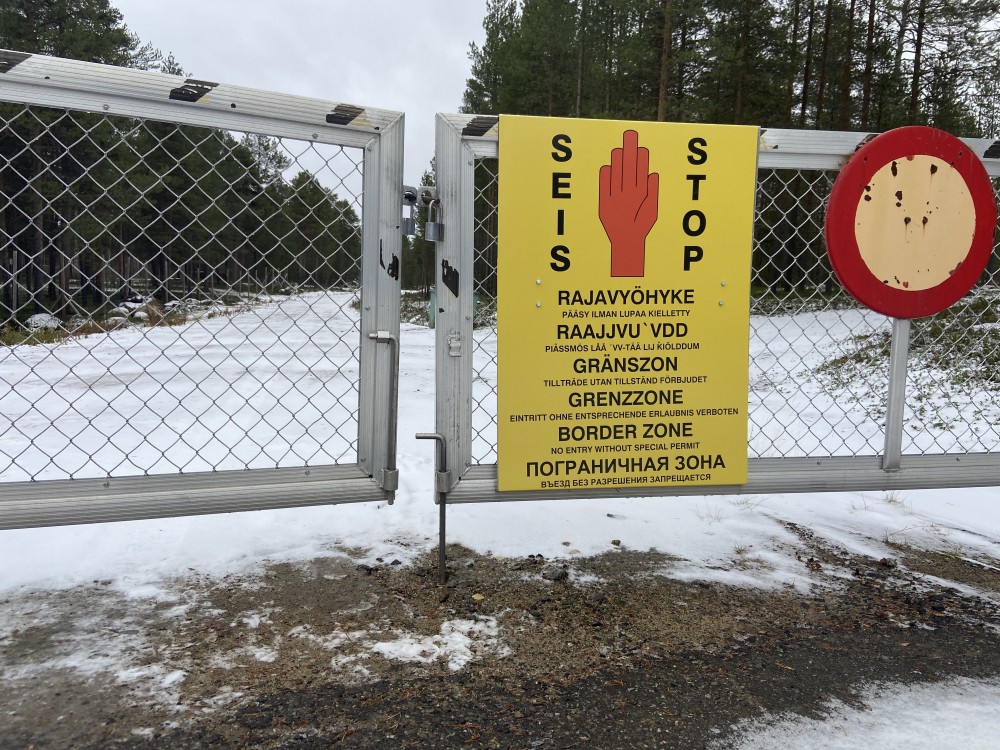
In response to what authorities have described as “instrumentalised migration” at its eastern frontier, in November Finland took the extraordinary step of closing its entire border with Russia. The government has also permitted the Immigration Service to establish “registration centres” where arrivals can be held for up to seven days.
In November, Finland recorded a significant spike in asylum seekers entering the country from Russia. In the first two weeks of that month, more than 500 people sought asylum at the eastern border, compared to 32 in October and 13 in September. (According to the Finnish government, as of 12 December the number of arrivals had increased to more than 900.) Finnish authorities claim that this spike in arrivals is due to Russia purposefully pushing migrants and asylum seekers to its border–an act that Helsinki has described as a “hybrid attack” resembling the “orchestrated instrumentalisation” of migrants by Belarus at EU borders in 2021.
In response, on 22 November Finland announced the closure of all but one of its eastern border crossing points. This was later extended to all eastern crossing points on 30 November. Although the government agreed to loosen the restrictions on 14 December by opening two crossing points at Vaalimaa and Niirala while maintaining other closures until 14 January, a quick u-turn that same day saw authorities announce that all crossing points would again be closed from 15 December.
Following a government meeting on 12 December, the country’s Ministry of Interior stated:
“We would like to emphasise that people should not travel to the Finnish-Russian border under these circumstances. Finland will make sure that our eastern border does not become a new pathway for instrumentalised migration into Europe.”
Rights groups and international observers have been quick to challenge the Finnish government’s decisions. The Finnish Non-Discrimination Ombudsman argued that closing the border “seriously jeopardizes the genuine and effective possibility of submitting an application for international protection,” while the Finnish Refugee Council stated that it likely violates EU and international asylum law. Calling on Finland to protect the right to seek asylum, UNHCR stated: “UNHCR urges both States to cooperate and to responsibly manage their borders in a protection sensitive manner, ensuring meaningful protection for all those in need. This is particularly important considering the harsh winter conditions affecting the region.” Similarly, in a letter to Finland’s Interior Minister, the Council of Europe’s Commissioner for Human Rights expressed her concerns regarding the human rights implications of a border closure:
“The actions of another state, as reprehensible as they may be, do not negate Finland’s obligations under international refugee and human rights law, including as regards non-refoulement, the protection of the right to life, the prohibition of inhuman or degrading treatment, and the prohibition of collective expulsions.”
According to POLITICO, other Baltic states are monitoring the situation. Latvia’s Ministry of Internal Affairs, for example, reported to the publication that “if the situation changes radically and threatens the security of the country, it is not excluded that Latvia will also close its eastern border completely.” Estonia, meanwhile, has warned that crossings could be banned if the situation worsens.
“Registration Centres”
As part of the Finnish government’s measures, on 24 November it also agreed to allow the Finnish Immigration Service–the Maahanmuuttovirasto Migrationsverket–to establish “registration centres” wherever needed.
Section 133 of the country’s Aliens Act provides for “registering a large number of displaced persons entering the country simultaneously.” Registration centres can be established at times when the number of arrivals is “exceptionally high” for three months following a government decision. It states:
“If the number of displaced persons entering the country is exceptionally high, which makes it impossible to establish that the requirements for entry are met and to register the aliens in the normal procedure, the Government may decide in a plenary session that persons whose requirements for entry or identity are unclear may be sent to the transit centre for displaced persons referred to in section 6 a of the Act on the Integration of Immigrants and Reception of Asylum Seekers (493/1999) for the purposes of registration.”
Registration centres can operate in any facility where asylum seekers are provided with “proper shelter, food, and adequate washing facilities.” They are used by authorities to register asylum applications and take biometric identifiers such as fingerprints. Foreigners can be required to remain within the facility for up to seven days, “unless otherwise required by the state of his or her health or other important personal reasons.”
According to reports, registration centres are expected to be established in Oulu and Joutseno. (Joutseno is already home to one of Finland’s dedicated detention centres, and is used for the detention of children and families. The country also operates a detention centre in Metsälä.)


